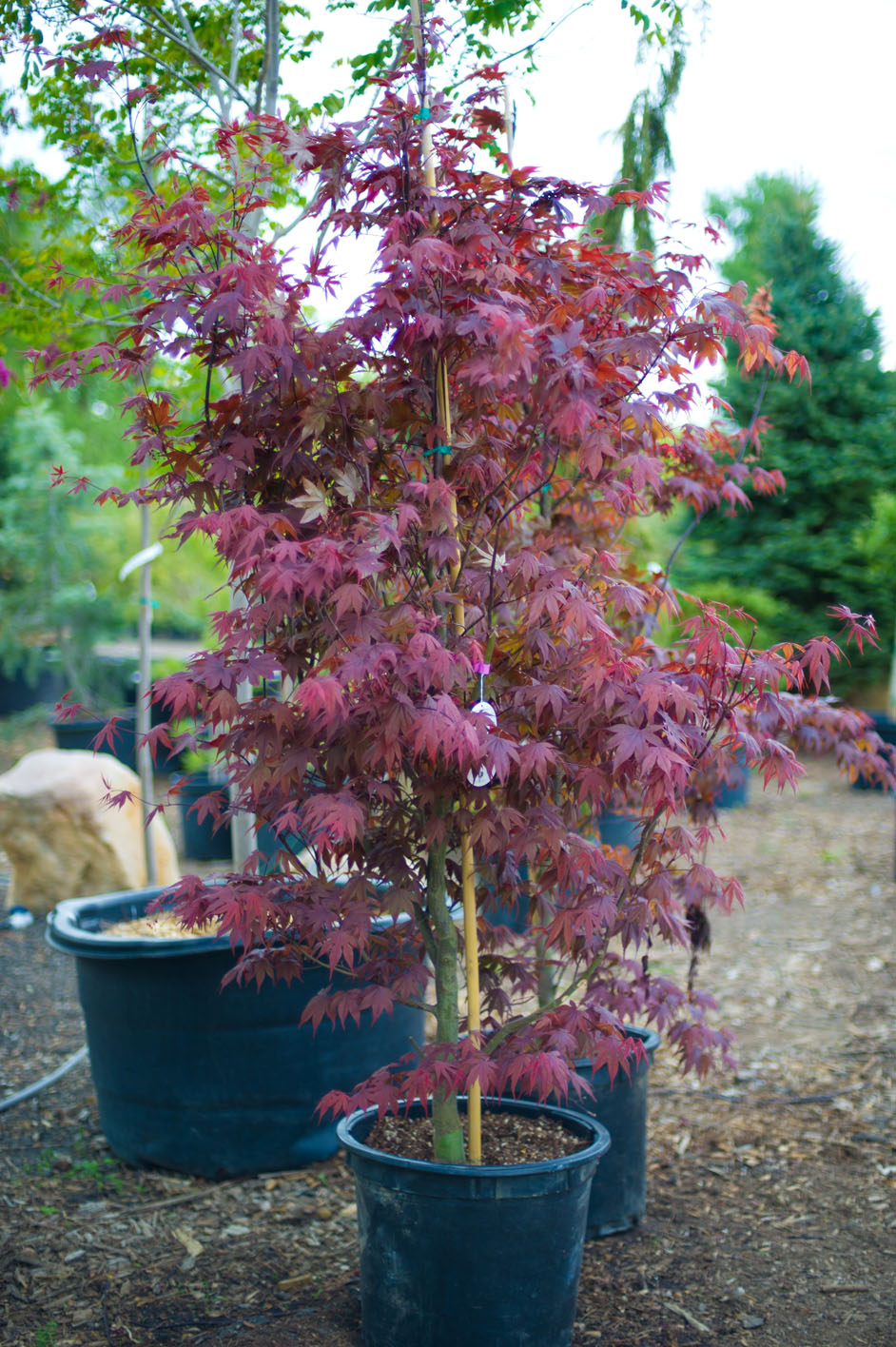

Some gardeners don’t like pruning this species, which will result in too much foliage. Pruning the Laceleaf Japanese Maple tree is a bit more complicated than pruning the uprights.

The preferred look is to have fewer branches filling the empty spaces. Cut off some small lateral branches and keep the others to get an all-around thinned outlook. The fourth and final step is to give the branches an even thinning. Remove any branches that are encroaching into the layers below or above them. The next step is to separate the tree into different layers. These include dead or brittle branches that no longer produce foliage. Secondly, you need to prune off the deadwood. To prune the upright Japanese Maple tree, you must follow four significant steps.įirstly, you must prune off the lower limbs, which choke the lower shrubs or cause obstacles to walkways. Removing branches that provide shade will allow harsh sunlight into the tree’s center if the temperature is too hot.Ī summer temperature of 80° Fahrenheit is ideal for pruning the Japanese Maple tree. If you plan to prune in the summer, you must be careful of the temperature. The summer, however, permits more accurate measurement of the brand that needs thinning. Winter is preferred because the tree loses some of its leaves during this season, making it easier to spot the branches that need to be cut back. Pruning in the winter, and experts consider the summer seasons as the best times. However, pruning in the spring may not give you the best results since the tree will produce new growth and will be flowing with sap. Unlike many other trees, Japanese maples are not season-specific. Louisville Plants That Are Most Easily Confused With This One: Other maples, but because its leaves are so unique and it has such a bright color in the fall.Both species are beautiful, but you must prune them correctly to maintain their attractive looks. Unique Morphological Features of Plant: Multiple Stems Size of Individual Flower: Smaller than a Quarterįruit Desirable to Birds or Squirrels? No Shape of Individual Flower: Radially Symmetrical Length of Leaf (or Leaflet): Between the Length of a Credit Card and a Writing-PenĬolor of Foliage in Summer: Reddish-BrownishĬhange in Color of Foliage in October: Changes to Reddish-Orange Stem (or Trunk) Diameter: Between The Diameter of a Broom-Handle and a Coffee-MugĬharacteristics of Mature (Brownish) Bark: Smooth Bark with Longitudinal Stripes Manner of Culture: Landscape Shrub-Vine-Tree Most Distinguishing Morphological Features of This Plant: Bright red leaves during fall foliage The Bloodgood has a strong fibrous root system, multiple stems, and slender shoots that end in small paired buds.įamily Name (Scientific and Common): Aceraceae, Maple FamilyĬontinent of Origin: China, Japan, Korea

In extremely hot and dry weather, it can be sun burned and become tattered. The Bloodgood requires direct sunlight for as least part of the day, but also needs partial shade. It is a noncompetitive plant and can still grow very well if surrounded by many other plants. It is an easy plant to grow, especially because it does not require large amounts of nutrients, and overall has very few problems. The Bloodgood is a strong growing plant and may grow 2 to 3 feet per year. It can grow 15 to 20 feet high and has a spreading habit. The Bloodgood has beautiful burgundy foliage its entire growing season and has small, but attractive red fruits.

The Bloodgood is commonly planted in gardens as an ornamental tree and is admired for its graceful and peaceful appearance. It is a cultivar named after the Bloodgood Nursery in Long Island, New York, where it was developed. The Bloodgood Japanese Red Maple was introduced into the United States before World War II.


 0 kommentar(er)
0 kommentar(er)
